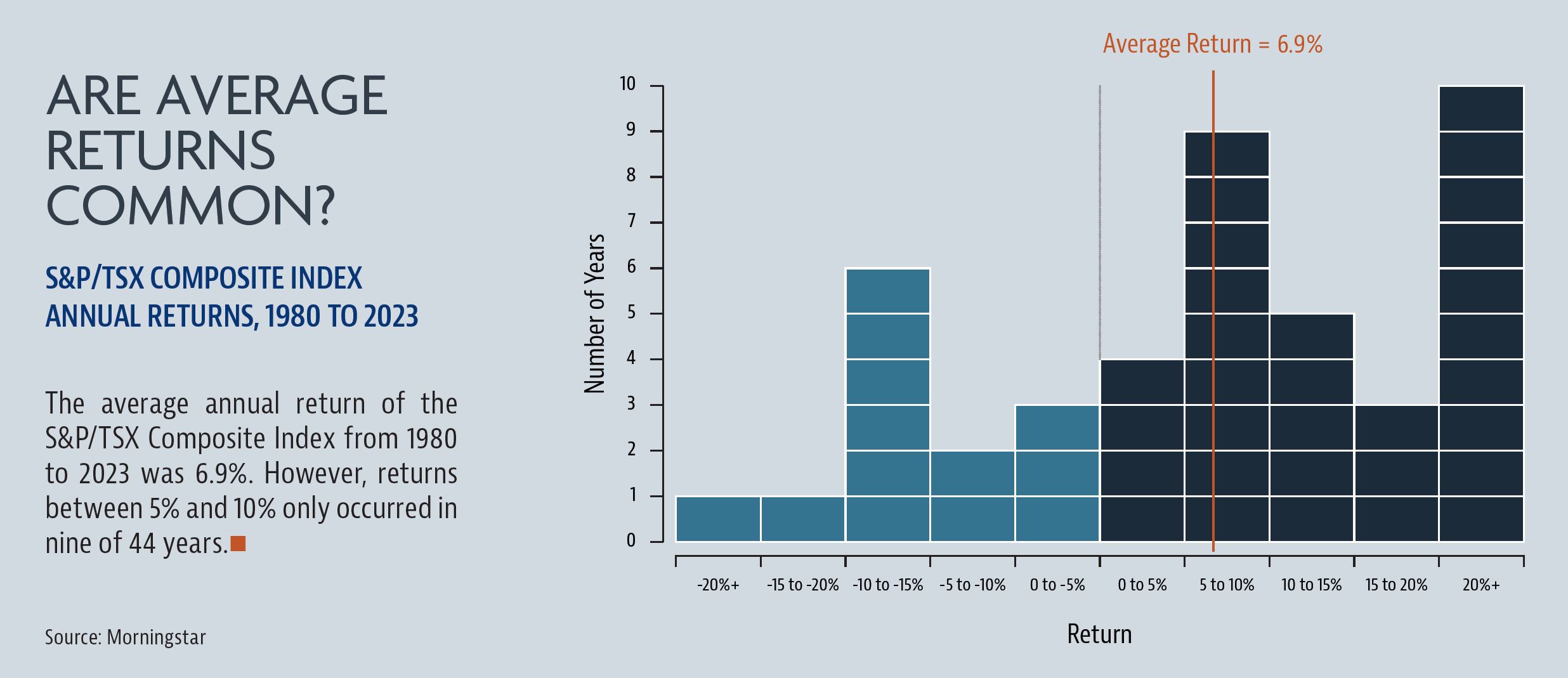In the early months of 2020, the coronavirus outbreak led to a sudden market meltdown—only to be followed by a surprisingly quick recovery by the summer. Not long after, in 2022, equity markets around the world entered bear market territory. In 2023, the markets rallied.
It’s no wonder that many investors today have volatility on their minds.
The reality is that, historically, market volatility is normal. Periods of high volatility can extend for multiple quarters or even years. Market swings only seem surprising if we’ve had a longer-than-usual period of relative calm or there has been a prolonged bull run or bear market. However, even bull or bear markets can have spikes and valleys of their own.
DAMPENING THE EFFECT
The volatility you experience in your portfolio is a milder version of what’s happening overall in the markets. Your portfolio’s asset allocation dampens volatility as the fixed-income component acts as a ballast, helping to smooth out returns. Also, diversification within each asset class reduces volatility, while minimizing risk.
If an investor wishes to make their portfolio even less volatile, they can decrease their allocation to equities and boost their fixed-income allocation. They could also focus on equities that have historically been less volatile, such as large-cap, dividend-paying companies.
TAKING ADVANTAGE OF VOLATILITY
Keep in mind that volatility also has benefits, since the downswings offer buying opportunities. The money managers behind your investments can expand exposure to current holdings at a discounted price or invest in quality companies previously deemed too expensive. Also, you can purchase shares or fund units at lower prices and come out ahead when your investments participate in the market recovery down the road.
THE PSYCHOLOGICAL FACTOR
Part of planning for volatility is being prepared psychologically, and understanding that it’s expected. When markets are down and your portfolio has lost value, recognize that downswings are part of the market cycle. Although future market trends cannot be predicted, it’s reassuring to know that every market correction or bear market has been followed by a recovery.
If volatility causes worry about achieving long-term goals, the yo-yo analogy can be helpful to some investors—and not only beginners. Picture a person riding up an escalator while playing with a yo-yo. The yo-yo is the stock market—it always goes up and down—but the long-term trend is always up.
Also important psychologically is to tune out media noise. When you hear messages of doom in falling markets, you’d never know volatility is normal and expected. The news media need stories, but you don’t need the anxiety.
WHEN YOU NEED SUPPORT
Even when you know volatility is expected, extreme market swings can create the sense that “this time it’s different.” When a bear market is especially long and bleak, an investor may believe that this time markets won’t rebound and that their portfolio will never regain its former value—but the real danger is stopping investing and missing out on the eventual recovery. If a bull run continues for multiple years, an investor may think that we’ve entered a wonderful new economy where the old market cycle doesn’t apply—however, overinvesting in equities would push their portfolio beyond their risk tolerance.
If you ever become anxious about market volatility, please get in touch. Together, we’ll look at how your investment program is on track to meeting your life goals.


